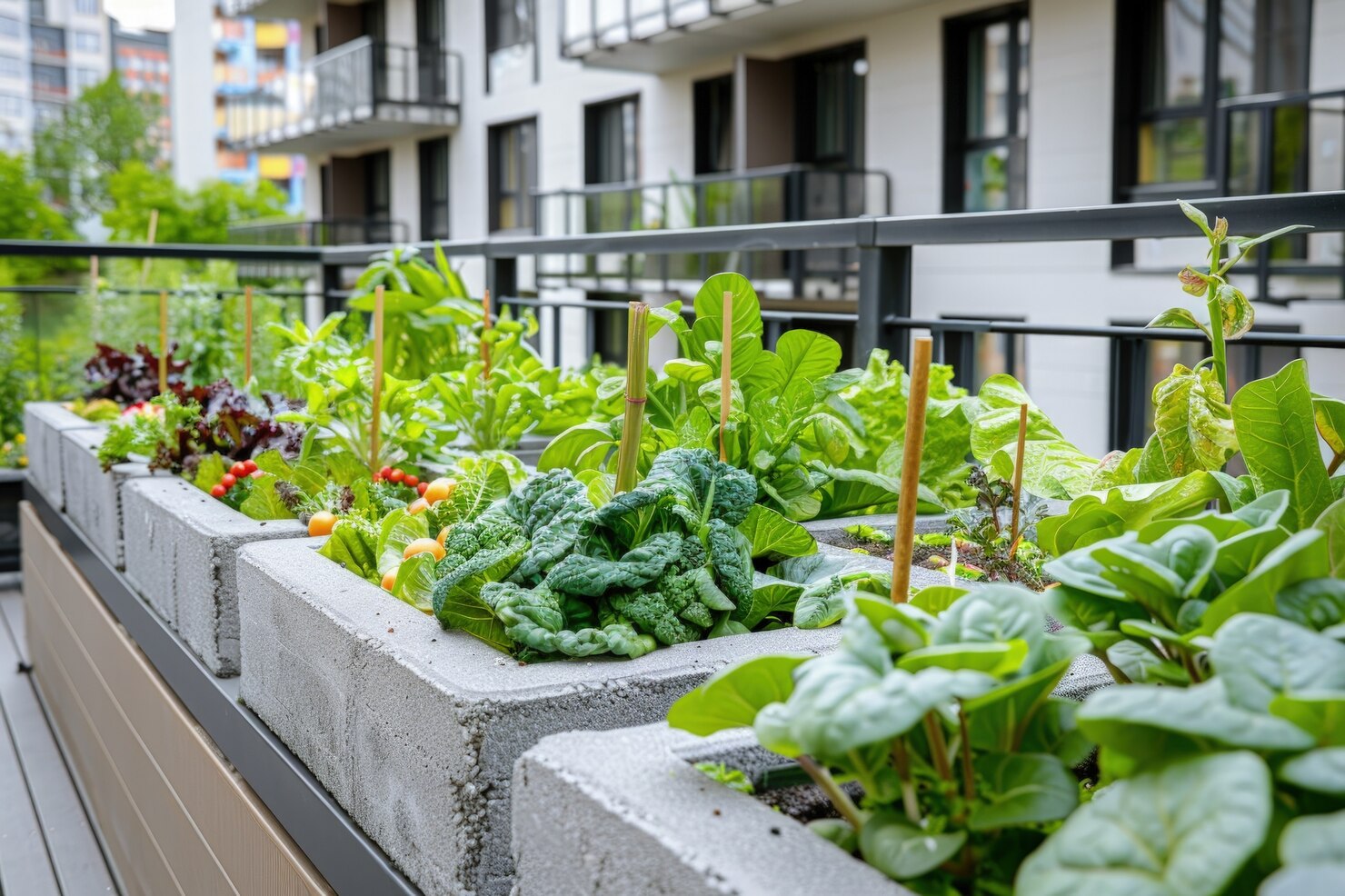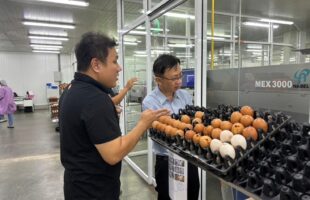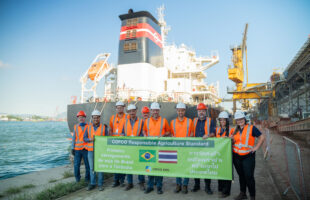
Image by Freepik
By Cath Isabedra
Exploring how Asian nations are pioneering the integration of agriculture into the urban fabric to secure food, enhance sustainability, and reshape city living — with lessons for the world.
Urban farming, a critical component of sustainable urban development, is transforming how cities across the globe address food security, environmental sustainability, and economic vitality. Hyper-local urban farming, which focuses on producing food within small, often densely populated urban areas, is gaining traction worldwide due to its potential to enhance local food systems.
This practice is particularly pertinent in Asia, a region experiencing rapid urbanization and facing high population densities and limited arable land.
The current landscape of hyper-local urban farming globally
Globally, urban farming is evolving as cities seek innovative solutions to sustainably feed their growing urban populations. Techniques like vertical farming and hydroponics are at the forefront, allowing crops to be grown in layered setups or water-based environments, minimizing land use, and reducing water consumption.
However, challenges still remain.
Urban farming often requires significant initial investment in terms of technology and infrastructure.
The high setup and maintenance costs can be prohibitive without subsidies or strong market demand for locally grown produce.
While technologies like vertical farming minimize the need for horizontal space, the availability of suitable urban locations supporting large-scale setups’ structural requirements and energy needs is still a major hurdle.
Urban farmers often face complex regulatory environments that can impede the development and expansion of urban farming initiatives.
Zoning laws, safety regulations, and building codes can limit where and how urban farms operate.
Dependence on advanced technology and infrastructure can also be a limitation, particularly in regions lacking technical expertise or reliable energy sources.
A closer look at urban farming in Asia
Urban farming in Asia presents a rich tapestry of approaches, each shaped by the unique challenges and priorities of the region’s diverse cultures and economies. The rapid urbanization and dense population clusters in Asia make urban agriculture not just a choice but a necessity, driving innovation and adaptation in several key areas.
China
China has become a leader in urban agriculture through heavy investment in technology and substantial government support. Initiatives like the Nanjing Green Towers, which incorporate plant life into skyscraper designs, exemplify how urban farming can be integrated into the urban landscape.
The government has also implemented policies that encourage the development of urban farming, providing subsidies for technology such as hydroponics and aquaponics, which are vital in areas with contaminated soil or water scarcity.
Japan
With its limited arable land, Japan has turned to creative solutions to maximize space, such as rooftop gardens and sophisticated indoor farming facilities.
One notable example is the Pasona Urban Farm, an office building in Tokyo where employees cultivate over 200 species of fruits, vegetables, and rice used in the building’s cafeterias.
This not only maximizes limited space but also reduces employee stress and improves air quality.
Singapore
Singapore’s approach is highly strategic, with urban farming a crucial component of its national food security strategy. The city-state, known for its limited space, has developed cutting-edge vertical farming methods that are now being adopted globally.
The government supports these innovations through grants and incentives, which has led to the success of vertical farms. These farms use tiered systems to grow vegetables close to residential areas, drastically reducing the need for food transportation and thereby lowering carbon emissions.
India
In contrast to the technology-driven approaches seen in other parts of Asia, India’s urban farming is largely community-driven and focuses on achieving food self-sufficiency.
Projects like the Mumbai Port Trust Garden take unused urban spaces and convert them into flourishing community gardens. These projects are often supported by non-governmental organizations and focus on employing women, thus providing both social and economic benefits.
Thailand
Thailand’s urban farming initiatives often blend traditional agricultural practices with modern techniques to enhance food security in urban areas. In Bangkok, projects like the Chao Phraya Sky Park demonstrate how public spaces can be transformed into productive green areas that encourage community farming. These initiatives are supported by both local municipalities and private sectors, which see urban farming as a way to reduce food import dependency and improve urban ecological balance.
The Philippines
In the Philippines, urban farming is an adaptive response to urban poverty and food insecurity. Metro Manila hosts numerous community garden projects that are often grassroots-driven, with local government units providing support through land and resources. These gardens supply food and serve as educational platforms to teach urban residents about sustainable practices and nutritional awareness.
Technological innovations and their socio-cultural impacts
Technological innovation in urban farming across Asia often focuses on sustainability and efficient resource use. Innovations such as AI-driven analytics for monitoring crop health, automated watering systems that conserve water, and nutrient film techniques that maximize yield in small spaces are common. These technologies address the physical constraints of urban environments and help make urban farming a viable commercial venture.
Socially and culturally, urban farming in Asia is vital in enhancing community engagement. In densely populated urban areas, communal gardens serve as social spaces, fostering interactions among residents. These spaces provide urban dwellers with a connection to nature and an understanding of the food production process, which is often lost in urban settings.
Furthermore, urban farms in Asia often serve educational roles, teaching urban residents, especially children, about sustainable living and the importance of fresh food. Schools in Singapore and Hong Kong, for example, have begun integrating garden-based learning into their curricula, providing practical skills and instilling values of environmental stewardship.
Comparative analysis: Asia and other Regions
In understanding the impact and evolution of hyper-local urban farming, it is essential to compare Asian practices with those in other regions, such as North America and Europe. Each region brings unique insights driven by differing cultural values, policy environments, and technological accessibilities.
Technological and policy-driven approaches in Asia
In Asia, urban farming is significantly influenced by technological innovation and strong governmental support. Countries like Singapore and China exemplify how state-driven initiatives can accelerate the adoption of urban farming.
For instance, Singapore’s “30 by 30” vision, which aims to produce 30 percent of its nutritional needs locally by 2030, has spurred numerous high-tech farming projects. These projects receive substantial government funding and policy support, facilitating advanced technologies such as aeroponics and robotics.
Community and grassroots movements in North America
In contrast, North America’s urban farming often emerges from community-based grassroots movements focused on enhancing food security and promoting social equity. Urban farms in cities like Detroit and Toronto are frequently established in response to urban decay or food deserts, with a strong focus on community involvement and local empowerment.
These initiatives tend to rely less on technology and more on traditional farming techniques, though innovations like community-supported agriculture (CSA) models are becoming more prevalent.
Sustainable and integrative practices in Europe
Europe’s approach to urban farming often integrates sustainability with cultural preservation. For example, in cities like Berlin and Paris, urban gardens are food sources and community hubs that preserve green spaces and foster social interactions among residents. The emphasis here is on organic farming practices, biodiversity, and the ecological footprint of food production. European policies, such as the Urban Farming Partnerships in Paris, support these initiatives by offering leases on city-owned land at low rates to promote sustainable urban agriculture.
While technological advancements are crucial, integrating community engagement in urban farming initiatives can significantly enhance their success and sustainability. Asia’s technology-driven approach could benefit from incorporating more community involvement, a key success factor in North America.
Conversely, Western models could adopt some of the high-efficiency, tech-driven methods used in Asia to increase productivity and reduce resource usage.
Many Asian urban farming technologies and methods have potential applicability in Western contexts, especially in urban areas with limited space. Techniques like vertical farming and hydroponics used in Singapore are already being adopted in North American and European cities to address similar challenges of urban space constraints.
However, the transfer of these technologies needs to be adapted to local contexts, considering the social, economic, and cultural differences.
Seeding the future
Hyper-local urban farming redefines the possibilities for urban landscapes in Asia and beyond. By examining the successes and challenges urban farming initiatives face globally, we can gather valuable insights into their potential impacts on future urban development. The continued evolution of urban farming practices will undoubtedly play a crucial role in shaping sustainable, resilient urban food systems worldwide.
This story first came out in our “Seeds of Change: The Urban Farming Phenomenon in Asia and Beyond” issue.








